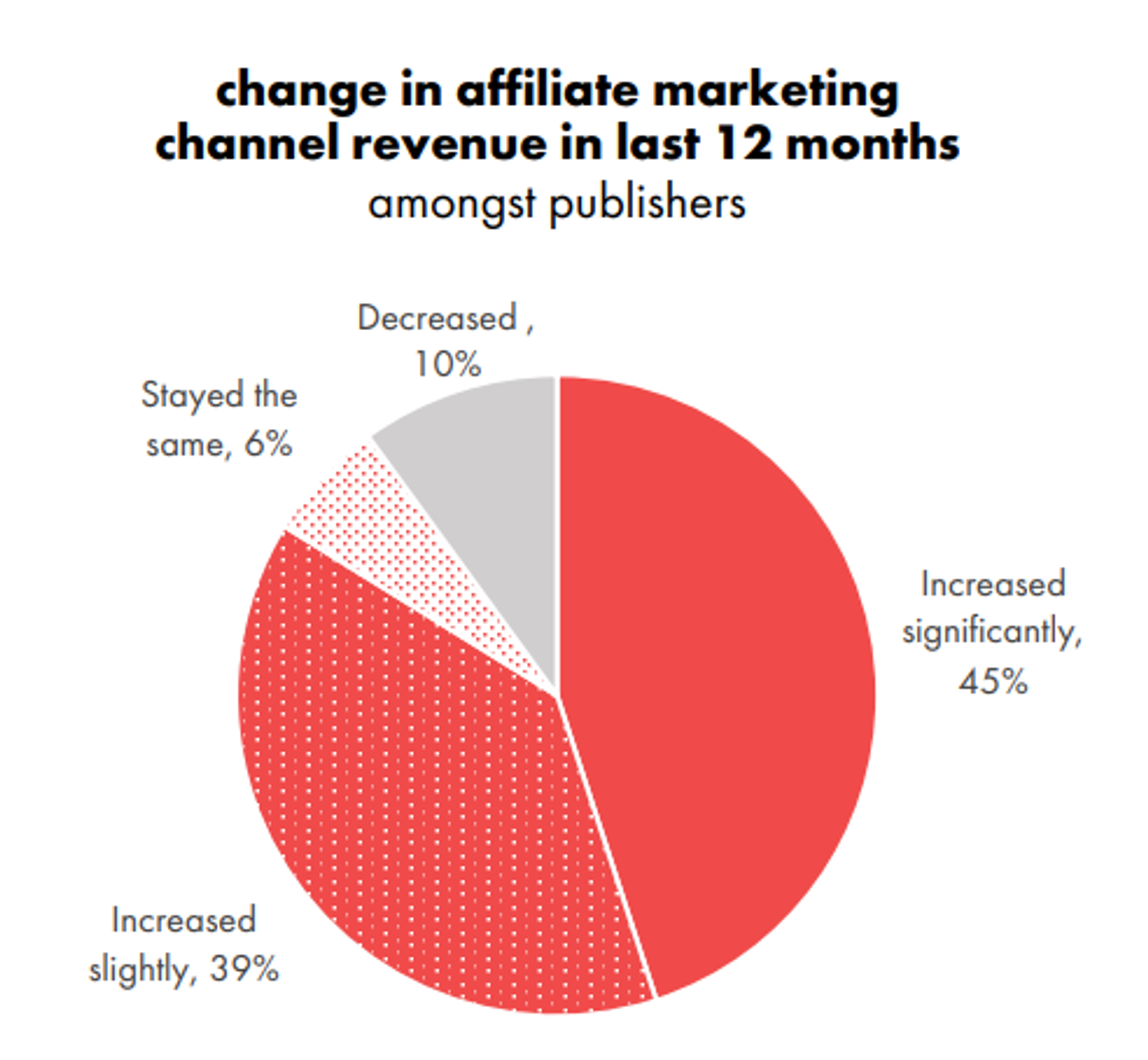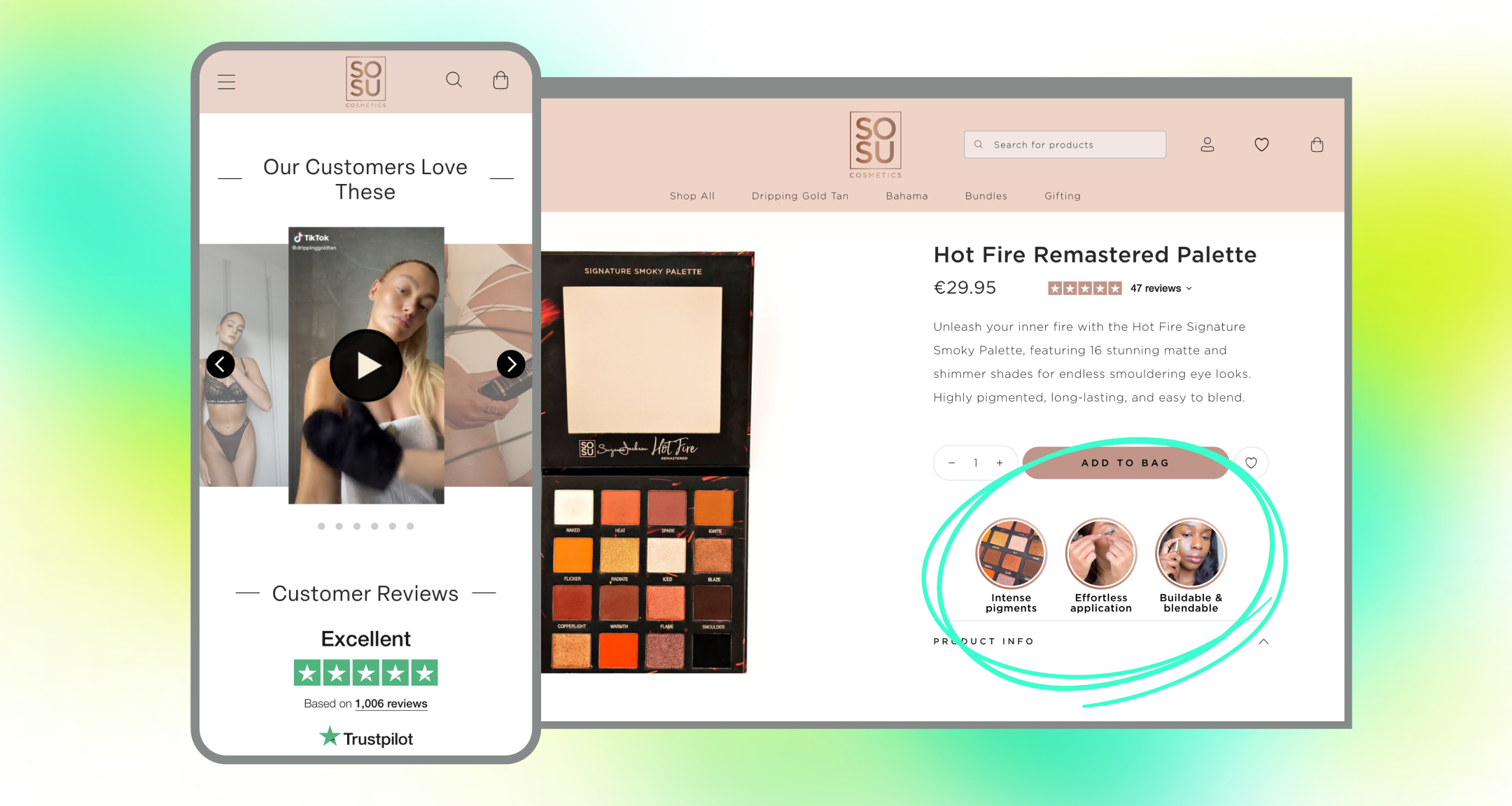Share
Starting a new business, but don’t have enough money to invest in high-decibel marketing campaigns? It’s the story of every eCommerce business owner in the early stages.
You need to tap into affiliate marketing.
Affiliates become the face of your brand and nudge people in their networks to buy your products. They rely heavily on word-of-mouth campaigns to drive sales.
The best part?
You only have to pay a small percentage of the sales these affiliates bring in. It’s a low-risk, cost-effective strategy to boost your bottom line.
In this article, we’ll break down all the reasons why you need an eCommerce affiliate marketing strategy and the best practices for creating your own.
What’s affiliate marketing?
Affiliate marketing is a performance-based marketing channel where affiliates—bloggers, content creators, influencers, and customers—promote your products and encourage their audience to buy from you. They earn commission based on your payment terms.
For example, let’s consider Courtenay’s example.
Courtenay is an affiliate for Zara and posted about this dress she bought from the clothing brand with a CTA to check out the link in her bio for buying this exact dress. Now, every time somebody buys this dress using Courtenay’s unique affiliate link, she’ll receive a part of the sale as a commission.
5 reasons why you should build your affiliate program
Affiliate marketing has gained a new meaning for today’s businesses. Let’s break down all the benefits you can get from this performance-based marketing tactic.
-
Access to a diverse audience: A global affiliate program can expand your reach to a broader audience. You can tap into multiple affiliate networks to reach people in different parts of the world. It’s a proven tactic to access a bigger audience and convert brand-unaware shoppers into loyal customers.
-
Get more ROI at lower costs: If you’re a low-cost startup, affiliate marketing promises great returns. Think of it as word-of-mouth advertising with a performance-based pricing model. So, affiliates are motivated to sell to earn commissions and you pay them only for the actual sales they bring.
In fact, research shows that 84% of brands witnessed a slight or significant increase in revenue through affiliate marketing in a one-year period.
-
No long-term commitments: Another big benefit of eCommerce affiliate marketing is its scalability. You can increase or decrease the affiliates you work with based on market trends, budget, and performance. There are no upfront costs or long-term commitments.
-
Build social proof through content: Affiliates make sales primarily through personal recommendations. It’s similar to influencer marketing where affiliates leverage their influence to create credibility for your brand and nudge followers to buy from you. They post value-packed content to generate interest and drive sales organically.
For example, this post by Emmie, a food content creator, builds social proof for the brand, Arthur & Sisters through meaningful content.
-
Create a network of ambassadors: You can turn long-term affiliates into brand ambassadors and present their loyalty as a vote of confidence in your products. Instead of building transactional relationships, focus on long-term partnerships to create genuinely meaningful marketing campaigns and enrich your brand image.
Remember: your affiliate marketing revenue will only be as good as your strategy. So, let’s look at the best practices to create your affiliate program from the ground up.
Launching an affiliate program for your eCommerce business
We spoke to dozens of eCommerce business owners running successful affiliate programs to curate their top tips for building a strategy from scratch. Let’s deep dive into the six critical tips for getting started.
1. Prepare the groundwork for affiliate marketing
Knowing your target audience is the key to building a foundation for your affiliate program. You should clearly know your shoppers’ preferences and behavioral traits to base your entire program around their needs.
You can conduct customer surveys to clearly understand their expectations and find opportunities to fulfill these needs with value differentiators in your products. Besides, these audience insights will also help you design marketing collateral around specific pain points to resonate more with your buyers.
Besides understanding your audience, you should also try these tactics to set yourself up for long-term success with your affiliate program:
-
Join competitors’ programs: Become a part of your competitors’ affiliate programs to get an insider view of their workflows, brand guidelines, payment structure, promotional materials, and more.
-
Learn more about affiliate networks: Explore different affiliate networks to gather insights about common commission rates, program terms, and similar details. These data points will help you set a good structure for your program.
-
Monitor social media platforms: Affiliates actively use social media channels and forums to share their views on different brands. You can keep an eye on their activity to assess their style of content creation and engagement rate.
-
Analyze competitors’ SEO: Use SEO tools like Ahrefs and Semrush to find which affiliates are working with your competitors. Analyzing their backlinks will show you the kind of affiliate content they’ve earned.
This initial legwork will give you the right data to make informed decisions for your affiliate marketing efforts.
2. Define program structure and commission terms
You should invest enough time into defining a structure for your affiliate program and setting the rates. But before you can decide on these specifics, you have to first:
-
Research industry standards: Since commission rates can vary depending on industry, product type, and average order value, it’s best to check out the average commission rates in your vertical or niche. This is crucial for setting competitive commissions—which aren’t too low or too high. You can refer to industry reports and affiliate networks to get this data.
-
Understand your margins: Consider your own margins when setting commission rates. You have to look at the price of your products—both fixed and variable costs—to assess how much you should ideally pay affiliates to maintain profitability. Then, evaluate this value against the average commission rates to finalize the right price.
As a next step, you have to decide the commission structure for your affiliate program. Here are a few types of commission structures you can choose from:
-
Percentage of sale: gives a percentage of the order value
-
Flat rate per sale: gives a fixed amount for each sale irrespective of order value
-
Tiered rates: gives different rates based on specific metrics like volume of sales
-
Recurring: gives recurring commission for the lifetime of the customer's subscription
You should clarify the payment threshold or the minimum earnings an affiliate should accumulate to receive a payout. You should also define how frequently you’ll process payments and what methods you accept to pay affiliates.
3. Create workflows to find, vet, hire affiliates
One of the most critical steps in building your affiliate program is onboarding the best affiliates. You can create workflows to strategically find or attract, vet, and hire affiliates.
Here are a few best practices for eCommerce brands to choose affiliates:
-
Use affiliate networks and social media: Go to affiliate platforms like ShareASale, Commission Junction, and Impact Radius to find affiliate talent interested in working with eCommerce brands like yours. You can also check social media apps like TikTok, Instagram, and YouTube to find niche creators interested in becoming affiliates.
-
Capture inbound interest for your program: You can launch campaigns to effectively publicize your affiliate program and generate inbound interest from affiliates. This means, they’ll reach out to you instead of the other way around. These potential affiliates are more eager to work with you, and would have a higher motivation to increase conversion rates.
-
Review their content and audience: Define specific parameters to review affiliates’ content and audience profile. You should check whether their content aligns with your brand values and performs well. Feel free to ask for case studies of their work or results they’ve produced for other brands. Make this review process airtight to finalize only the best candidates.
-
Streamline the onboarding process: Make it easy for affiliates to work with your brand. You should establish clear guidelines and communication channels for them to start promoting your products. Provide detailed resources, like promotional materials, products, and all necessary information, to get them started on the right note.
The success of your affiliate program relies heavily on how quickly and effectively you can hire affiliates. So, create and test these workflows from the get-go for achieving a high ROI.
4. Share guidelines about your brand identity
You can’t simply hire affiliates and let them take the wheel without any support. You have to brief them about your brand and set clear expectations.
Here’s everything you should curate in a brand kit when onboarding affiliates:
-
Brand story: Share your brand's history, mission, and values to help affiliates connect with your brand more authentically. They can highlight these insights in their content to resonate emotionally with their audience.
-
Target audience: Highlight all the buyer personas you want to reach and list differentiating traits for each persona. For example, you can shed light on their demographics, interests, buying behaviors, and more such traits.
-
Visual identity: Share your logo, color palette, typography, and imagery (type of images aligned with your brand’s style) with affiliates. You can also give them additional instructions for using these elements and specify restrictions, if any.
-
Messaging: Describe your brand’s tone of voice with examples to easily contextualize your style of messaging. You should also clearly outline what kind of language they can/can’t use when promoting your products.
-
Creative assets: Curate multiple creative assets in a folder for affiliates to use anything in their promotions. These assets can be banners, posters, videos, templates, jingles, and anything that shows your brand in action.
5. Set up your affiliate management software
The final step is about choosing an affiliate management software to implement all your workflows—from hiring to launching. While there are multiple tools to choose from—like Affise, Awin, Impact, and more, you have to consider a few critical features before making your final pick, such as:
- Referral tracking for unique affiliate links and codes
- Flexible commission structure setup + performance bonuses
- Streamlined affiliate registration, review, and onboarding processes
- Option to easily store and access creative assets whenever needed
- Built-in messaging to keep in regular touch and quickly sync with affiliates
- Detailed reporting and analytics capabilities to monitor performance
- Payment management features to calculate and process payouts effortlessly
Save this checklist for the next time you’re choosing an affiliate management tool!
Let affiliates drive revenue for your brand
Affiliate marketing is a low-cost marketing channel to stand out in crowded markets and win buyers’ trust. We shared our best practices for building your affiliate program from the ground up.
So, what are you waiting for? Kick-start your research and onboard affiliates to unlock a new revenue channel for your business.
Share




.jpg?width=420&height=420&name=live%20shopping%20top%205%20fashion%20(1).jpg)